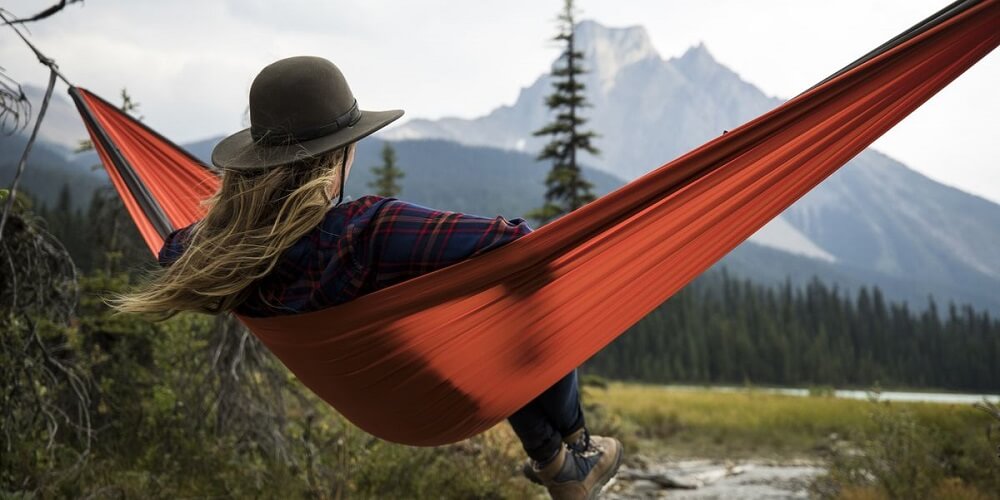It is not uncommon to see people on colorful hammocks as they swing gently between trees. If you are someone who loves to spend a lot of time outdoors, you’ll find a hammock an adequate substitute for other outdoor activities. It offers couples the opportunity to spend quality time together while they sleep under the stars. This simple gear sure has its perks.
Well, if you desire to get a hamac for yourself, you’ve come to the right place. This article provides all the information you need to select the most suitable one for your needs.
Factors to Consider When Choosing a Hammock
1. The size of the hammock
There are two major sizes available: single hammocks and double hammocks. The width of most single hammocks is between 4-5 feet, and the weight limit ranges between 300-400 pounds. Double hammocks, on the other hand, have a width of 5-6 feet while they have a weight limit of 400-500 pounds.
The benefits of the double hammock are in two-folds: First, it is more spacious and it offers a better sleeping experience. Second, it allows its users to share with someone else. However, most people who opt for the double hammock do so for comfort and not because they intend to share it with someone else.
2. The end use of the hammock
The choice of a hammock also depends on its intended usage. So, if you want to get one for camping, a more durable hammock should be what you are looking for. However, if the purpose of getting a hammock is for backpacking, then the weight of the hammock should be one of the key things to consider before buying one.
3. The accessories of the hammock
The accessories available should also be considered before buying a hammock. Some popular accessories include a suspension system, bug net, rain tarp, and an underquilt.
In most cases, the suspension system (which is a pair of tree straps) is sold separately from the hammock. However, before getting a tree strap, ensure that the width of the strap is not less than 0.75 inches because thin straps may end up damaging trees by digging into them.
Look for a bug net that offers 360-degree protection since they also protect you underneath. Ensure that the net has a ‘no-see-um’ netting which will help prevent bugs the size of gnats.
The rain tarp is most useful when it’s the rainy season. This accessory hangs over the hammock and protects against rain. Of course, bigger tarps offer more protection.
An underquilt helps when you feel cold around your bottom side due to the cool air. It provides a measure of warmth that a regular sleeping pad wouldn’t (a sleeping pad compresses the insulation between you and the hammock).
Conclusion
A hammock can be a wonderful alternative to the traditional tent. However, before getting one, it would be better to borrow one and try it. At the end of the day, the hammock provides a sleeping experience not everyone may enjoy. Some may simply prefer the traditional tent. Either way, if you are sure about getting a hammock, this article will prove useful.
